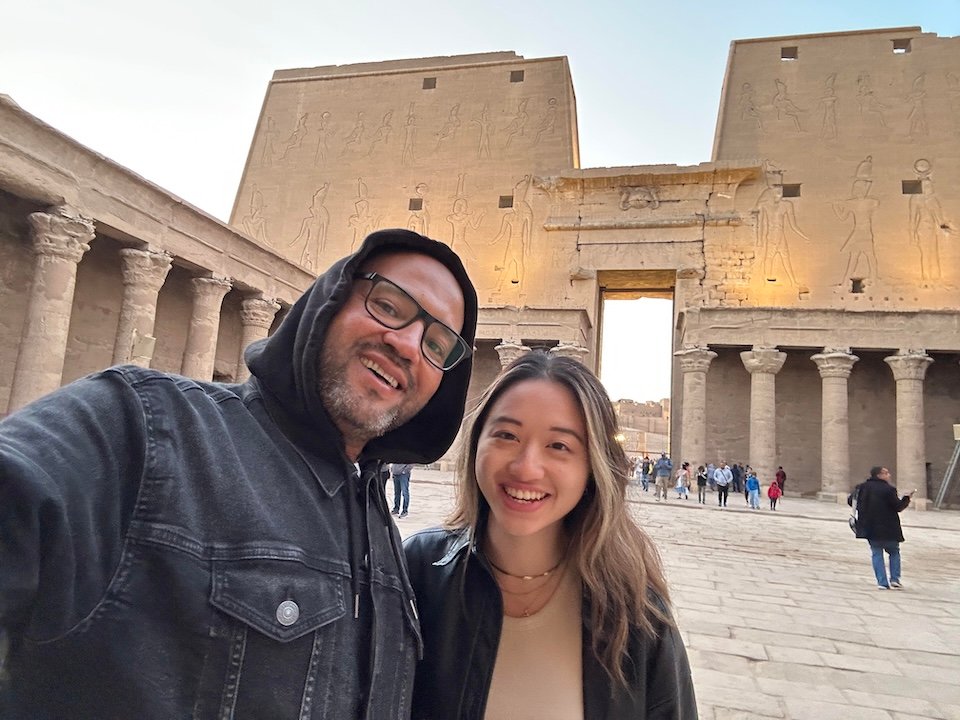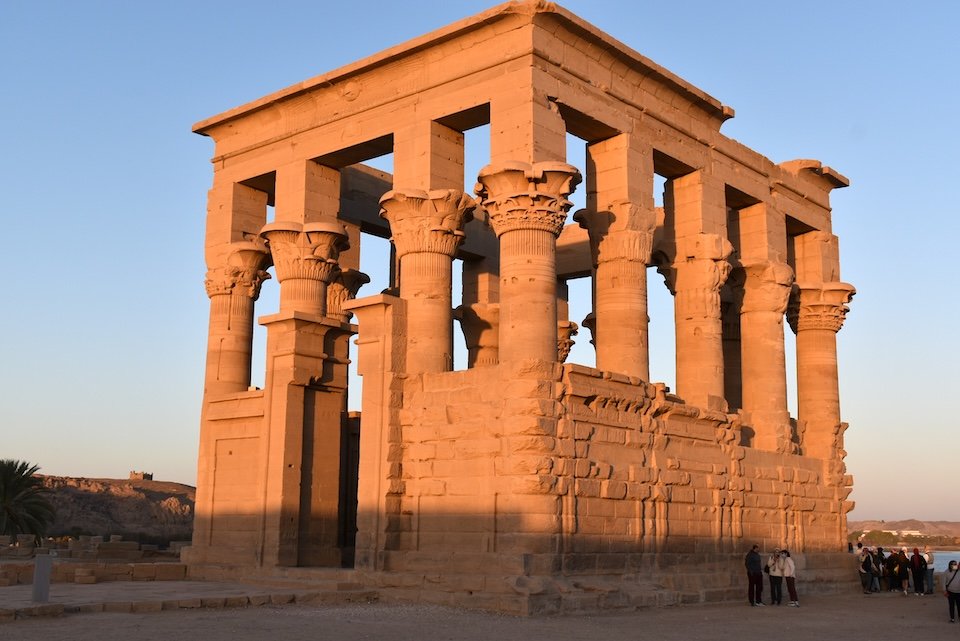Philae Temples: A Rescued Masterpiece of Ancient Egypt.
The pearl of ancient Egyptian temples: Your entrance to the Nubian world begins with a visit to the temple of the beautiful Isis and her brave son Horus.
Philae Temples: Between the legend of Isis and the lost love amid the Nile River in the charming city of Aswan, in the far south of Egypt, lies the Temple, “Dora of the Nile temples.” One of the most beautiful Egyptian Nubian temples to visit during your Nile Cruise in Egypt, because of its unique location in the middle of the Nile River and the arms of the River’s Cataract.

Where are the temples of Philae located?
The Temples of Philae are located approximately 4 kilometers (2.5 miles) south of Aswan. Located on an island within the First Cataract of Aswan, it is situated in the heart of the River Nile.
The History of Philae Temples.
The Temple of Philae’s history began in the Third century BC and has continued through several eras, such as the Greek, Roman, and Byzantine eras, each of which had an impact on the temple’s walls.
The island of Philae contains various Pharaonic landmarks, including the earliest King Nakhtnebu shrine (362 BC), as well as a Greek-Romanian temple, the Temple of the Mandolis, and the Kiosk of Trajan, which dates back to the Roman era.
Ptolemy II Philadelphos built the main temple in Philae, which was dedicated to the goddess Isis and Horus (the falcon deity) and was known to the ancient Egyptians as a goddess of motherhood and the moon.
What are the temples of Philae Island?
The island of Philae consists of many temples, the most essential and the largest of which is the Temple of the goddess Isis, which mediates the architectural art and is surrounded by several smaller temples or compartments, such as the cabin that is located at the entrance to the island in the southwestern corner and dates back to the era of the Thirtieth family of the pharaoh’s history.
The primary goal of the construction of the Temples of Philae was the worship of the goddesses Isis and Hathor. Greeks and Romans alike worshipped Isis, one of the strongest deities in ancient Egypt.
The Greeks and Romans regarded it as the center of worship for the goddess Isis, associating it with the idols of love in their religions: Aphrodite and Venus.
According to the ancient Greek historian Plutarch (45-125 AD) in his books on the legend of Isis, she found the heart of her beloved husband Osiris adjacent to the island of Philae, which is known as the island of Beja, and she set up for her husband on that island a symbolic cemetery that she used to visit daily.
It should be noted here that the current buildings were transferred from their original island (Philae) to the island of Agilika adjacent to the original island between 1972 and 1982 during a massive project adopted by UNESCO to save the effects of the Philae temple from the floodwater while the original island of Philae was sinking completely in the Nile waters and renamed Agilkia Island by New Philae Island.

Legends about Philae temples.
Myths are linked to the Philae temples that have been associated with many legends about the Isis temple (the main temple on the island), and between the walls of this temple, the myths of love and loyalty were born. One of the most famous stories of ancient love that this temple has been famous for since those ancient times is the story of love between the goddess Isis and the god Osiris, as her husband was killed by his brother (Seth), and Isis believed that part of her husband’s body was near this island, so she established a cemetery for her husband. For his soul.
One of the other myths that arose on this island is the legend of Anas of existence, and it is one of the names that the island was known by. The story was about a prince named Anas of Existence who had a beloved lover who loved him with great love, but she was a prisoner inside that island, so he went to save her by riding on the back of a crocodile in the Nile River, and he managed to save her and dismantle her family.
The Philae is a symbol of peace, friendliness, and love, and in the ancient Egyptian language it was called the Billack and meant the end or the distant place because it was the end of Egypt, and the Philae is from a Greek word, its beloved meaning, and it was called this name in the era of the Greeks at a time when the Greek language was prevalent.
How to visit the Temples of Philae during a Nile cruise in Egypt?
An Aswan stop is where most River ships that are going on a Nile tour in Egypt will stop so that you can see the Temples of Philae. You will then take a speedboat to get to Agilkia Island, which is where the temple complex is located. Your tour guide will be with you the whole time you’re traveling and at the site. This trip is usually part of Nile cruises, and you can book a Nile cruise from here
Why was it called this Philae temple designation?
The synonym for this word contains many meanings, so the beloved in the Greek language also means the end or limit in the ancient language of Hieroglyphics, an indication that the temple was considered the last southern border of Egypt.
What are the most famous artifacts in the Philae temple?
The temple includes archaeological columns dating back to the Roman era, a rare shrine for the last pharaohs in Egypt, the Temple of Hathor, the Temple of Imohtep, which dates back to the Ptolemaic era, and the Mandolis Temple.
What is the bed of Pharaoh or the Trajan Kiosk, the most prominent feature of the temple?
It is a very rare impact dating back to the Roman era, and a phrase from a 14-column building on both sides, full of inscriptions on the walls of Emperor Trajan, and offerings to King Isis, and Emperor Trajan is the second Roman Antonine emperor.
What is the island of Agilica to which the Philae temples were transferred?
This island is 500 meters from Philae Island, and it was transferred to the temples of Philae after the construction of the High Dam, and the process of saving temples began in 1972.
Why was the Philae temple transferred to this island?
Since the construction of the Aswan Dam in 1902, the Nile waters began besieging the island, and the matter has become increasingly dangerous to the artifacts. After thinking about building the High Dam, studies indicated that building the dam would besiege the temples between the old and new dams and expose them to partial drowning, so the saving of elephant temples began.
How were the Philae temples rescued?
Steel panels were used where 3000 steel plates were used to fix the Nile bottom, to fill the water from the island and prevent it from drowning, with a length of 12 meters around the island, and it took two years until the important artifacts were transferred to the Island of Agilica.
Trusted Partners
Nile Cruisen: Chosen by Leading Brands as Egypt's Top Cruise Operator











